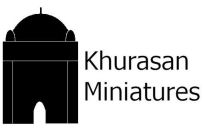Menu
| |
15mm Central Asian City States, 6th-11th Centuries AD

.
This list covers the Sogdian city-states and the cities of the Tarim basin. These powerful cities sat on the trade routes linking east and west and had an important role as middlemen in trade. In particular Sogdian merchants traveled far and wide, as far east as China (where Sogdians were also renowned as warriors and administrators) and as far west as the Byzantine Empire. As a result the city-states were vastly wealthy. At various times they were in the orbit of greater powers (most notably Sassanid Persia), but often maintained independent armies and were formidable regional players.
The Sogdian city-states such as Samarkand and Bukhara were eventually conquered by Arab armies after epic struggles, often prominently featuring the Chakar, heroic slave-soldier contingents of the great magnates and merchant rulers. These fearsome warriors made a profound impression on those who experienced them firsthand. A Chinese Buddhist monk, Xuanzhuang, wrote of them,"there are in Samarkand brave warriors whose character is brave and who are likely to struggle to death, so there are no enemy who can fight with them in front of them."
These city states linked Persia and the Turks and often their appearance, weapons and military tactics were an admixture of the two great cultures.
Notes on the range:
Note that the command set has a king and some replacement parts to make Chakar models into either standardbearers or sub-generals. There is a standard and several ceremonial maces, symbols of rank, which can be added to the hands of Chakar models. The chakar models shown in the image for that set are for illustrative purposes only, and are not in the set -- they need to be purchased separately from the command set.
Chakar models are provided with separate shields, because they at times are depicted in period art without shields. Others were depicted riding armoured horses, and so we offer a set with the Turkish armoured horses -- we recommend that you file off the slotted manes on the horse models if you use them for the Chakar.
The Sogdian horse archers can be used in early Arab armies as well, as these continued to be fielded after the Arab conquest -- they are often called "Khurasanian horse archers" in army lists, so our models seem especially appropriate! The Diqhan are also perfect for nobility in Central Asian Turkish armies of the same period, and may be suitable for the earliest Turkish Ghulams as well (before widespread use of chainmail).
|
|

